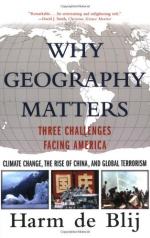
|
| Name: _________________________ | Period: ___________________ |
This quiz consists of 5 multiple choice and 5 short answer questions through Chapter 9.
Multiple Choice Questions
1. When were the boundaries of nation-states in Africa drawn?
(a) When developed countries began sending foreign aid to Africa.
(b) When World War II ended.
(c) When Europe colonized Africa.
(d) When African countries became independent.
2. How many countries are there in the world?
(a) Nearly 400.
(b) Nearly 200.
(c) Nearly 100.
(d) Nearly 300.
3. Which of the following statements is the best description of Earth's geologic history?
(a) Earth used to have a tropical climate and has gotten steadily more temperate.
(b) Earth is usually warm but has also had some short Ice Ages.
(c) Earth has had several Ice Ages separated by shorter warm periods.
(d) Earth used to have a cold climate and has gotten steadily warmer.
4. What is the name for the area in which the cities of Ramadi, Tikrit, Baghdad, and Fallujah lie?
(a) The Shi'ite Triangle.
(b) The Hussein Triangle.
(c) The Kurdish Triangle.
(d) The Sunni Triangle.
5. Why does de Blij feel that Americans are unprepared to evaluate global warming?
(a) Because they do not understand geologic history.
(b) Because they do not pay attention to current events.
(c) Because they do not take classes in geography.
(d) Because they do not know enough about science.
Short Answer Questions
1. When did the nation-state emerge in Europe?
2. Which of the following European countries did NOT colonize Africa?
3. Which of the following countries does de Blij think will play an important role in the new world order?
4. Which of the following is one of the characteristics of a nation-state?
5. What reason did Iraq give for invading Kuwait just before the first Gulf War?
|
This section contains 337 words (approx. 2 pages at 300 words per page) |

|




